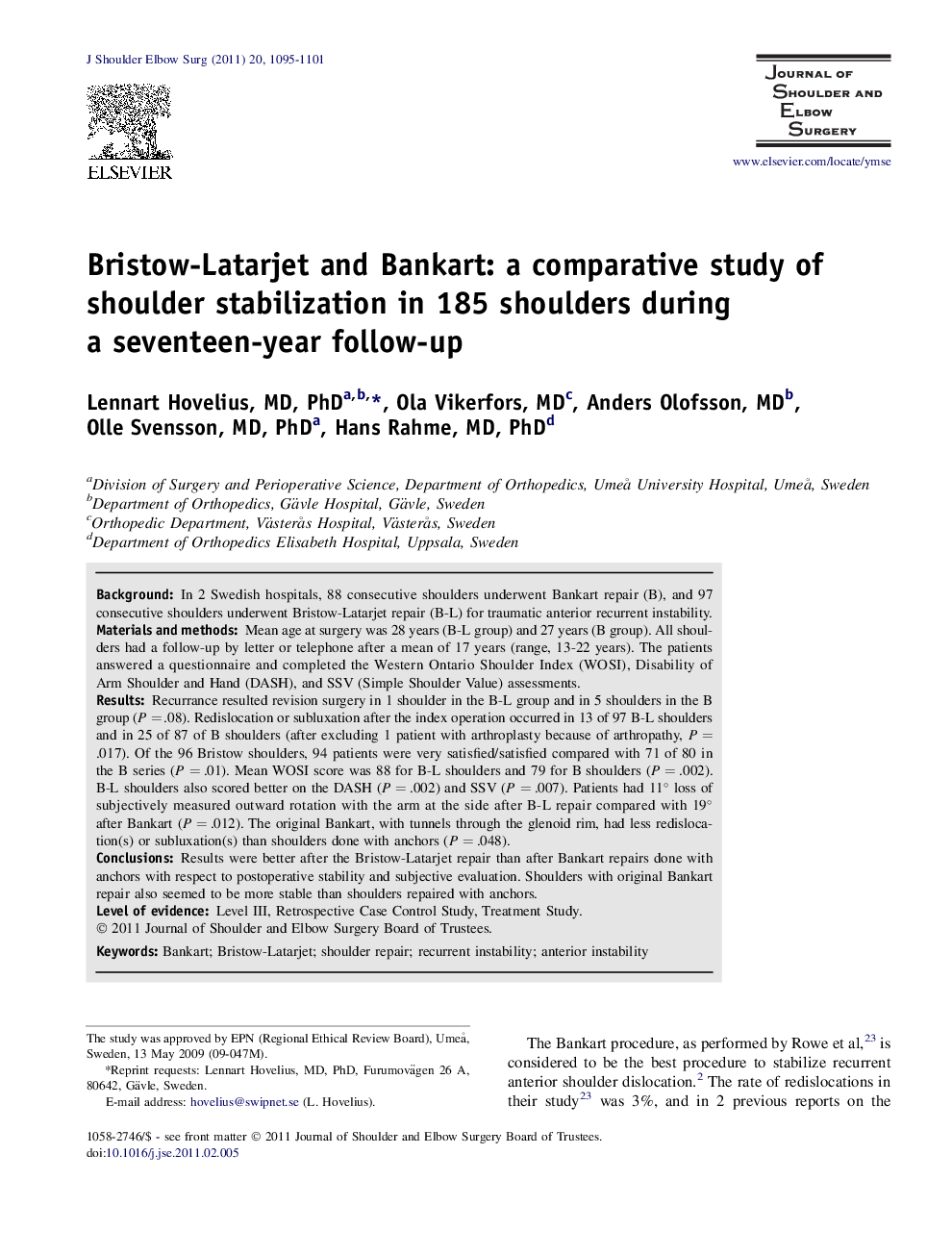| Article ID | Journal | Published Year | Pages | File Type |
|---|---|---|---|---|
| 4075872 | Journal of Shoulder and Elbow Surgery | 2011 | 7 Pages |
BackgroundIn 2 Swedish hospitals, 88 consecutive shoulders underwent Bankart repair (B), and 97 consecutive shoulders underwent Bristow-Latarjet repair (B-L) for traumatic anterior recurrent instability.Materials and methodsMean age at surgery was 28 years (B-L group) and 27 years (B group). All shoulders had a follow-up by letter or telephone after a mean of 17 years (range, 13-22 years). The patients answered a questionnaire and completed the Western Ontario Shoulder Index (WOSI), Disability of Arm Shoulder and Hand (DASH), and SSV (Simple Shoulder Value) assessments.ResultsRecurrance resulted revision surgery in 1 shoulder in the B-L group and in 5 shoulders in the B group (P = .08). Redislocation or subluxation after the index operation occurred in 13 of 97 B-L shoulders and in 25 of 87 of B shoulders (after excluding 1 patient with arthroplasty because of arthropathy, P = .017). Of the 96 Bristow shoulders, 94 patients were very satisfied/satisfied compared with 71 of 80 in the B series (P = .01). Mean WOSI score was 88 for B-L shoulders and 79 for B shoulders (P = .002). B-L shoulders also scored better on the DASH (P = .002) and SSV (P = .007). Patients had 11° loss of subjectively measured outward rotation with the arm at the side after B-L repair compared with 19° after Bankart (P = .012). The original Bankart, with tunnels through the glenoid rim, had less redislocation(s) or subluxation(s) than shoulders done with anchors (P = .048).ConclusionsResults were better after the Bristow-Latarjet repair than after Bankart repairs done with anchors with respect to postoperative stability and subjective evaluation. Shoulders with original Bankart repair also seemed to be more stable than shoulders repaired with anchors.
